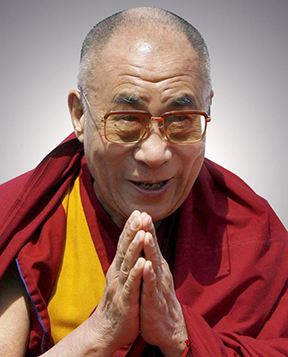


Continue Reading Daniel Ratherĭan Rather has a resume that reads like a history book. Bodhisattvas are realized beings, inspired by the wish to attain complete enlightenment, who have vowed to be reborn in the world to help all living beings. The Dalai Lamas are believed by Tibetan Buddhists to be manifestations of Avalokiteshvara or Chenrezig, the Bodhisattva of Compassion and the patron saint of Tibet. This video is a collaboration between the Lasker Foundation and iBiology.
DALAI LAMA MEDITATE SERIES
This interview was filmed in 2008 for a series on the mind and the brain. In this interview from 2008, Dan Rather and His Holiness talk science and what we can learn from the practice of meditation. The Dalai Lama has always had a keen interest in science. DALAI LAMA: Thank you.Ġ0:05:05.13ĝALAI LAMA: I really appreciate it. That I can relate to.Ġ0:04:59.04 Thank you so much, Your Holiness.

DALAI LAMA MEDITATE HOW TO
in modern science,Ġ0:01:53.09 particularly the science of health, or medical science,Ġ0:01:58.21 now they've begun to realize our emotions areĠ0:02:02.24 very, very important for our health.Ġ0:02:06.23 Some scientists actually say fear and hatred, these emotions,Ġ0:02:13.23 are actually eating our immune system.Ġ0:02:24.18 a calm mind promotes freshness and compassion, warm-heartedness.Ġ0:02:31.07 Now, these emotions are actually increasing our immune system.Ġ0:02:42.07 SCIENTIST: Next, we're gonna do another block of compassion meditation.Ġ0:02:47.14ĝALAI LAMA: In order to know that,Ġ0:02:52.05 Then, they found there's a certain area of our brainĠ0:03:09.12 a certain area of brain function is becoming more active.Ġ0:03:22.04 Now, through experiment or through investigation,Ġ0:03:30.21 tackle our destructive emotions,Ġ0:03:34.12 and try to reduce these negative emotions,Ġ0:03:37.13 and increase positive emotions.Ġ0:03:40.20 So, that's my main, let's say, wish.Ġ0:03:45.01 How to bring some benefit to the society or to individuals.Ġ0:03:49.16 RATHER: Are you going to take a professorship in science?Ġ0:04:02.02ĝALAI LAMA: I'm a believer of rebirth,Ġ0:04:08.02 so I think time for the preparation for next life is also important.Ġ0:04:14.13 Then, of course, sometimes I describe myselfĠ0:04:17.17 as a scientist rather than a religious person.Ġ0:04:21.05 RATHER: They tell me you're studying for a doctorate in quantum physics nowĠ0:04:27.08ĝALAI LAMA: I got some lessons, a few hours,Ġ0:04:32.24 when I listened very carefullyĠ0:04:36.06 when they explained about quantum physics.Ġ0:04:38.17 When I listened, I've got something.Ġ0:04:42.00ěut as soon as that lesson finished,Ġ0:04:46.28 So therefore, I have keen interest about that,Ġ0:04:50.05 but, since, hopeless student.Ġ0:04:53.18 RATHER: Believe me, I fully understand.Ġ0:04:55.27 That I can relate to. I mean, generally, my interest about science,Ġ0:01:33.04 I think I can say, has been since my childhood.Ġ0:01:39.20 I was always wondering, what was that? What was that? What was that?Ġ0:01:43.09 Useful to expand our knowledge,Ġ0:01:47.00 but also, I think, something very relevant.Ġ0:01:49.21 Now, today, in. Thank you.Ġ0:01:06.29 Let's talk science, particularly neuroplasticity.Ġ0:01:13.19 When you first heard scientists were beginning to explore the possibilityĠ0:01:19.26 that the brain could rewire itself,Ġ0:01:23.17 what interested you the most?Ġ0:01:28.00ĝALAI LAMA: My interest. 00:01:02.23 RATHER: Your Holiness, I very much appreciate you doing this.


 0 kommentar(er)
0 kommentar(er)
